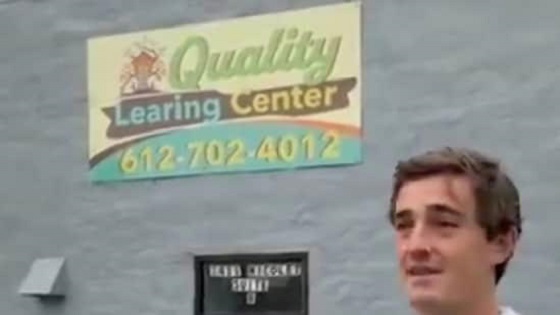Fraser Institute
Virtual care will break the Canada Health Act—and that’s a good thing

From the Fraser Institute
The leadership of the Canadian Medical Association (CMA) is facing sharp criticism for its recent proposal to effectively ban private payment for virtual care. In a clear example of putting politics before patients, this would only erect additional barriers for those seeking care.
Moreover, it’s a desperate bid to cling to an outdated—and failed—model of health care while underestimating modern-day innovations.
Virtual care—online video doctor consultations—is a private-sector innovation. In response to our government system’s inability to provide timely care, private companies such as Maple have been offering these services to Canadians for almost a decade. In fact, the public system only pushed meaningfully into the virtual space during COVID when it established partnerships with these private companies alongside setting up new fee codes for virtual consultations.
In return for improving access to physician consultations for thousands of Canadians, these virtual care companies have been rewarded with increased government scrutiny and red tape. The weapon of choice? The Canada Health Act (CHA).
Specifically, sections 18 to 21 of the CHA prohibit user fees and extra billing for “medically necessary” services. Further, the insurance plan of a province must be publicly administered and provide “reasonable access” to 100 per cent of insured services. Provinces found in violation are punished by the federal government, which withholds a portion (or all) of federal health-care transfer payments.
Until recently, there had been no obvious conflict between the CHA and privately paid-for virtual care—primarily because the provinces are free to determine what’s medically necessary. Until recently, many provinces did not even have billing codes for virtual care. As virtual services are increasingly provided by the public sector, however, the ability to innovatively provide care for paying patients (either out-of-pocket or through private insurance) becomes restricted further.
Within this context, the CMA recently recommended formally including virtual care services within the public system, alongside measures to ensure “equitable access.” At the same time, it reiterated its recommendation that private insurance to access medically necessary services covered by the CHA be prohibited.
See where this is going?
The kicker is an additional recommendation banning dual practice (i.e. physicians working in both the public and private sector) except under certain conditions. This means doctors in the public system who could otherwise allocate their spare hours to private appointments online would now have to choose to operate exclusively in either the public or private system.
The combined effect of these policies would ensure that innovative private options for virtual care—whether paid for out-of-pocket or though private insurance—will either be overtaken by bureaucracies or disappear entirely.
But what the CMA report fails to recognize is that virtual care has expanded access to services the government fails to provide—there’s little reason to suspect a government takeover of the virtual-care sector will make things better for patients. And even if governments could somehow prevent Canadian doctors and companies providing these services privately, virtual care is not beholden to Canada’s physical borders. Patients with a little bit of technical knowhow will simply bypass the Canadian system entirely by having virtual consultations with doctors abroad. If Canadians can figure out how to access their favourite show in another country, you can be sure they’ll find a way to get a consultation with a doctor in Mumbai instead of Montreal.
Instead of forcing physicians and patients to operate within the crumbling confines of government-run health care, the CMA’s leadership should be grateful for the pressure valve that the private sector has produced. We should celebrate the private innovators who have provided Canadians better access to health care, not finding ways to shut them down in favour of more government control.
Author:
Business
Dark clouds loom over Canada’s economy in 2026

From the Fraser Institute
The dawn of a new year is an opportune time to ponder the recent performance of Canada’s $3.4 trillion economy. And the overall picture is not exactly cheerful.
Since the start of 2025, our principal trading partner has been ruled by a president who seems determined to unravel the post-war global economic and security order that provided a stable and reassuring backdrop for smaller countries such as Canada. Whether the Canada-U.S.-Mexico trade agreement (that President Trump himself pushed for) will even survive is unclear, underscoring the uncertainty that continues to weigh on business investment in Canada.
At the same time, Europe—representing one-fifth of the global economy—remains sluggish, thanks to Russia’s relentless war of choice against Ukraine, high energy costs across much of the region, and the bloc’s waning competitiveness. The huge Chinese economy has also lost a step. None of this is good for Canada.
Yet despite a difficult external environment, Canada’s economy has been surprisingly resilient. Gross domestic product (GDP) is projected to grow by 1.7 per cent (after inflation) this year. The main reason is continued gains in consumer spending, which accounts for more than three-fifths of all economic activity. After stripping out inflation, money spent by Canadians on goods and services is set to climb by 2.2 per cent in 2025, matching last year’s pace. Solid consumer spending has helped offset the impact of dwindling exports, sluggish business investment and—since 2023—lacklustre housing markets.
Another reason why we have avoided a sharper economic downturn is that the Trump administration has, so far, exempted most of Canada’s southbound exports from the president’s tariff barrage. This has partially cushioned the decline in Canada’s exports—particularly outside of the steel, aluminum, lumber and auto sectors, where steep U.S. tariffs are in effect. While exports will be lower in 2025 than the year before, the fall is less dramatic than analysts expected 6 to 8 months ago.
Although Canada’s economy grew in 2025, the job market lost steam. Employment growth has softened and the unemployment rate has ticked higher—it’s on track to average almost 7 per cent this year, up from 5.4 per cent two years ago. Unemployment among young people has skyrocketed. With the economy showing little momentum, employment growth will remain muted next year.
Unfortunately, there’s nothing positive to report on the investment front. Adjusted for inflation, private-sector capital spending has been on a downward trajectory for the last decade—a long-term trend that can’t be explained by Trump’s tariffs. Canada has underperformed both the United States and several other advanced economies in the amount of investment per employee. The investment gap with the U.S. has widened steadily since 2014. This means Canadian workers have fewer and less up-to-date tools, equipment and technology to help them produce goods and services compared to their counterparts in the U.S. (and many other countries). As a result, productivity growth in Canada has been lackluster, narrowing the scope for wage increases.
Preliminary data indicate that both overall non-residential investment and business capital spending on machinery, equipment and advanced technology products will be down again in 2025. Getting clarity on the future of the Canada-U.S. trade relationship will be key to improving the business environment for private-sector investment. Tax and regulatory policy changes that make Canada a more attractive choice for companies looking to invest and grow are also necessary. This is where government policymakers should direct their attention in 2026.
Business
Residents in economically free states reap the rewards

From the Fraser Institute
A report published by the Fraser Institute reaffirms just how much more economically free some states are compared with others. These are places where citizens are allowed to make more of their economic choices. Their taxes are lighter, and their regulatory burdens are easier. The benefits for workers, consumers and businesses have been clear for a long time.
There’s another group of states to watch: “movers” that have become much freer in recent decades. These are states that may not be the freest, but they have been cutting taxes and red tape enough to make a big difference.
How do they fare?
I recently explored this question using 22 years of data from the same Economic Freedom of North America index. The index uses 10 variables encompassing government spending, taxation and labour regulation to assess the degree of economic freedom in each of the 50 states.
Some states, such as New Hampshire, have long topped the list. It’s been in the top five for three decades. With little room to grow, the Granite State’s level of economic freedom hasn’t budged much lately. Others, such as Alaska, have significantly improved economic freedom over the last two decades. Because it started so low, it remains relatively unfree at 43rd out of 50.
Three states—North Carolina, North Dakota and Idaho—have managed to markedly increase and rank highly on economic freedom.
In 2000, North Carolina was the 19th most economically free state in the union. Though its labour market was relatively unhindered by the state’s government, its top marginal income tax rate was America’s ninth-highest, and it spent more money than most states.
From 2013 to 2022, North Carolina reduced its top marginal income tax rate from 7.75 per cent to 4.99 per cent, reduced government employment and allowed the minimum wage to fall relative to per-capita income. By 2022, it had the second-freest labour market in the country and was ninth in overall economic freedom.
North Dakota took a similar path, reducing its 5.54 per cent top income tax rate to 2.9 per cent, scaling back government employment, and lowering its minimum wage to better reflect local incomes. It went from the 27th most economically free state in the union in 2000 to the 10th freest by 2022.
Idaho saw the most significant improvement. The Gem State has steadily improved spending, taxing and labour market freedom, allowing it to rise from the 28th most economically free state in 2000 to the eighth freest in 2022.
We can contrast these three states with a group that has achieved equal and opposite distinction: California, Delaware, New Jersey and Maryland have managed to decrease economic freedom and end up among the least free overall.
What was the result?
The economies of the three liberating states have enjoyed almost twice as much economic growth. Controlling for inflation, North Carolina, North Dakota and Idaho grew an average of 41 per cent since 2010. The four repressors grew by just 24 per cent.
Among liberators, statewide personal income grew 47 per cent from 2010 to 2022. Among repressors, it grew just 26 per cent.
In fact, when it comes to income growth per person, increases in economic freedom seem to matter even more than a state’s overall, long-term level of freedom. Meanwhile, when it comes to population growth, placing highly over longer periods of time matters more.
The liberators are not unique. There’s now a large body of international evidence documenting the freedom-prosperity connection. At the state level, high and growing levels of economic freedom go hand-in-hand with higher levels of income, entrepreneurship, in-migration and income mobility. In economically free states, incomes tend to grow faster at the top and bottom of the income ladder.
These states suffer less poverty, homelessness and food insecurity and may even have marginally happier, more philanthropic and more tolerant populations.
In short, liberation works. Repression doesn’t.
-

 Business2 days ago
Business2 days agoDisclosures reveal Minnesota politician’s husband’s companies surged thousands-fold amid Somali fraud crisis
-

 Alberta2 days ago
Alberta2 days agoThe Canadian Energy Centre’s biggest stories of 2025
-

 Business2 days ago
Business2 days agoResurfaced Video Shows How Somali Scammers Used Day Care Centers To Scam State
-

 Business19 hours ago
Business19 hours agoThe Real Reason Canada’s Health Care System Is Failing
-

 Business2 days ago
Business2 days agoMinneapolis day care filmed empty suddenly fills with kids
-

 Business2 days ago
Business2 days agoOttawa Is Still Dodging The China Interference Threat
-

 Business18 hours ago
Business18 hours agoFederal funds FROZEN after massive fraud uncovered: Trump cuts off Minnesota child care money
-

 Opinion11 hours ago
Opinion11 hours agoGlobally, 2025 had one of the lowest annual death rates from extreme weather in history



